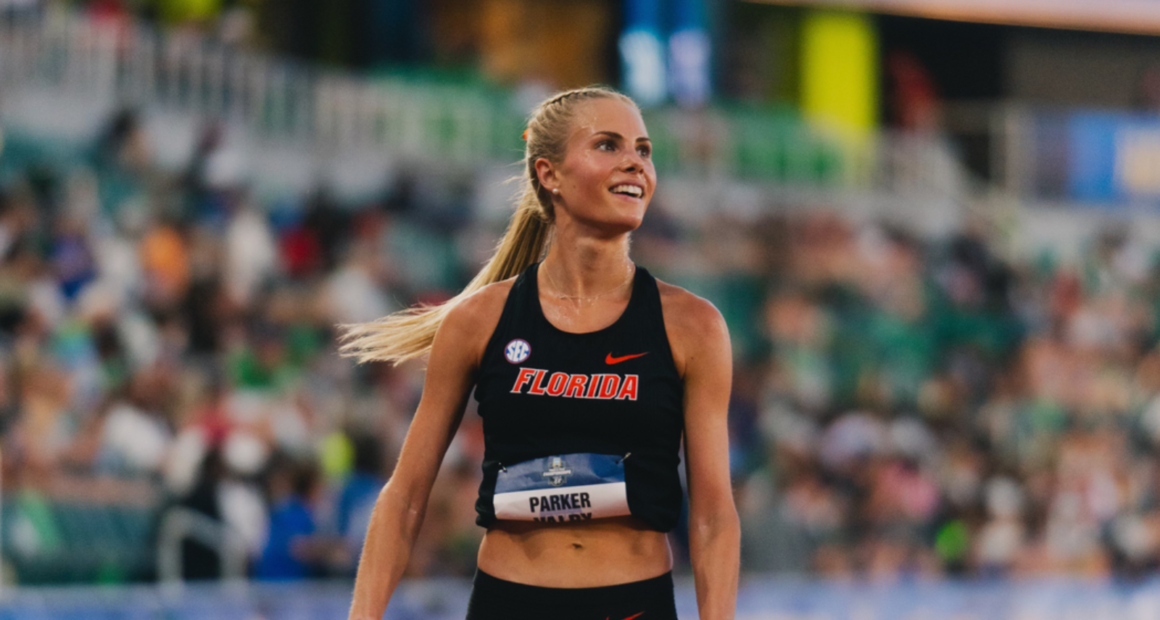Parker Valby is a rising American distance running star known for her unconventional training methods and competitive spirit. Despite the challenges, she became a champion within just three weeks.
Born on September 27, 2002, in Pennsylvania and raised in Tampa, Florida, Parker completed her schooling at East Lake High School, where she was also a competitive swimmer. Her natural talent and determination led her to become the Florida state champion and an all-time record holder while still a junior.
Valby’s remarkable career includes being a six-time NCAA champion and the current NCAA record holder for the 5000m indoor, 5000m outdoor, and 10000m outdoor events.
However, this article focuses not on her athletic achievements but on a subject that has piqued the curiosity of many fans and followers: her impressive weight loss. We’ll explore the journey and the facts behind Parker Valby’s weight loss transformation.
Parker Valby’s Weight Loss: The Reason Behind It

First and foremost, there’s no need to worry about Parker Valby’s weight loss. The young and energetic athlete is perfectly healthy, and her weight loss isn’t due to any illness or issue.
Athletes, especially those in track and field and cross-country, often lose weight to improve their performance. A lighter body can run faster and more efficiently, as excess weight can slow them down.
In Parker Valby’s case, she lost weight to stay fit and maintain stamina for long races. Standing at about 5’8″ and weighing around 110 pounds, Valby has always had a slim figure. Fans noticing her weight loss should know it’s a small, intentional change of about 17 pounds, aimed at enhancing her athletic performance.
Related: Maurkice Pouncey Reveals Incredible 70-Pound Weight Loss Post-NFL!
Redefining Success with Alternative Training Methods
Parker Valby isn’t your typical NCAA champion distance runner. While her competitors run many miles on the track, Valby has created her own unique training method that challenges traditional ideas—and it’s working incredibly well.
At just 21 years old, Valby has already made history in collegiate track and field by winning six NCAA titles. Her path to success, however, hasn’t been smooth. After dealing with stress fractures in her feet in 2022, Valby decided to cut back on her running days and focus more on cross-training.
“I only run two to three days a week,” Valby said at the NCAA Cross Country Championships, where she showed her strength despite running less. The rest of her training involves hard workouts on the elliptical and in the pool, where she works so hard that she leaves “puddles of sweat on the floor.”
Related: Jennifer Crumbley Weight Gain (Lack of Physical Activity Is the Cause)
This approach isn’t easy; it’s quite the opposite. Valby’s cross-training sessions are tough workouts that support her limited running schedule. She focuses on quality rather than quantity, making sure every mile—whether on land or in water—helps her reach peak performance.
Her weekly routine balances intensity and strategy. Mondays start with two cross-training sessions, setting the pace for the week. Tuesdays are for track workouts to improve her speed and endurance. Wednesdays and Fridays have double cross-training sessions, keeping her fit without straining her healing feet. Thursdays change based on upcoming races, keeping her flexible and ready.
Saturdays can be either another tough workout or a well-deserved rest, depending on her schedule. Sundays finish the week with more cross-training, showing her dedication to overall fitness.
Valby’s method questions the traditional idea that top runners must run many miles to succeed. Instead, she makes the most of each session, using cross-training to avoid injuries and improve her overall fitness. Her results are impressive: record-breaking performances and a strong presence on the track.
As Valby gets ready for the Olympic trials, her unique approach inspires other athletes and shows that innovation can lead to great success. By changing training norms, Parker Valby has not only succeeded but also set a new standard for distance running.









